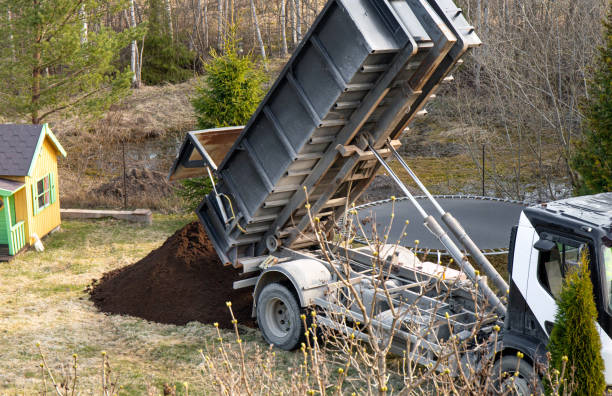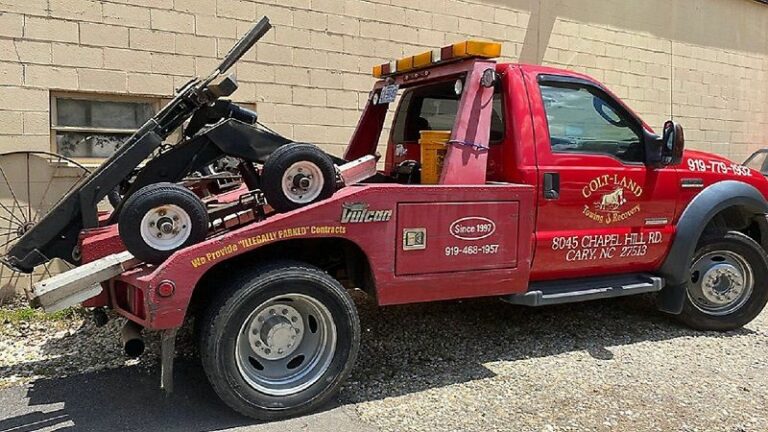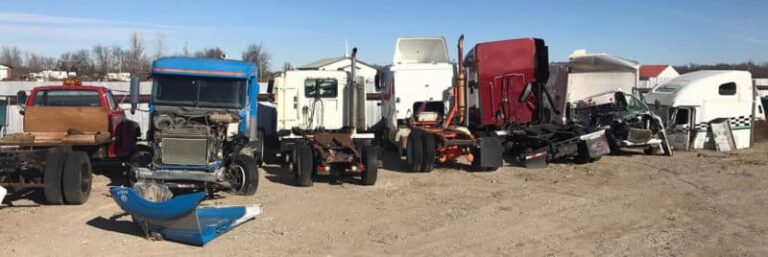How Many Yards In A Dump Truck: A Comprehensive Guide to Understanding Capacity and Optimizing Your Projects
How Many Yards In A Dump Truck: A Comprehensive Guide to Understanding Capacity and Optimizing Your Projects cars.truckstrend.com
In the world of construction, landscaping, and material hauling, few questions are as fundamental and frequently asked as "How many yards in a dump truck?" Whether you’re a homeowner planning a backyard renovation, a small contractor managing a job site, or a large-scale developer orchestrating complex logistics, accurately understanding dump truck capacity is paramount. It’s not just about knowing a number; it’s about optimizing costs, ensuring efficiency, preventing costly mistakes, and maintaining safety.
This comprehensive guide will demystify the concept of cubic yards in relation to dump trucks, exploring the myriad factors that influence capacity, providing practical advice for estimating your needs, and offering insights into making informed decisions for your next project.
How Many Yards In A Dump Truck: A Comprehensive Guide to Understanding Capacity and Optimizing Your Projects
Understanding the Cubic Yard: The Foundation of Dump Truck Capacity
Before diving into truck sizes, it’s essential to grasp the basic unit of measurement: the cubic yard. A cubic yard is a unit of volume, representing a cube that measures 3 feet long, 3 feet wide, and 3 feet high.
- Calculation: 3 feet x 3 feet x 3 feet = 27 cubic feet.
When you order materials like topsoil, gravel, sand, or mulch, they are typically sold by the cubic yard. Similarly, when excavating, the amount of dirt removed is often measured in cubic yards. Therefore, knowing how many cubic yards a dump truck can hold directly translates to how much material you can transport in a single trip, significantly impacting your project’s budget and timeline.
The importance of this understanding extends beyond simple measurement. It influences:
- Cost Estimation: Accurately predicting the number of loads required helps in budgeting for material and hauling fees.
- Logistics Planning: Knowing capacity allows for efficient scheduling of deliveries, minimizing downtime.
- Resource Management: Prevents over-ordering (leading to waste and storage issues) or under-ordering (leading to project delays and additional delivery charges).
- Safety and Compliance: Ensures trucks are loaded within legal weight and volume limits, preventing accidents and fines.


Factors Influencing Dump Truck Yardage: More Than Just Truck Size
While the physical dimensions of a dump truck’s bed dictate its maximum volumetric capacity, several other crucial factors influence the actual amount of material it can carry per load. Overlooking these can lead to significant miscalculations.
1. Type of Material (Density is Key!)
This is arguably the most critical factor. Materials vary dramatically in density (weight per unit of volume).
- Light, Bulky Materials: Materials like mulch, compost, or light topsoil are less dense. A truck might reach its volumetric capacity (e.g., 20 cubic yards) before it hits its weight limit.
- Heavy, Dense Materials: Materials like gravel, sand, asphalt, concrete, or wet soil are very dense. In these cases, a truck will almost always reach its weight limit long before it fills its bed to volumetric capacity. For example, a truck rated for 15 cubic yards might only be able to carry 10 cubic yards of gravel due to weight restrictions.

| Material Type | Approximate Weight per Cubic Yard (lbs) |
|---|---|
| Mulch | 400 – 800 |
| Topsoil (dry) | 2,000 – 2,200 |
| Sand (dry) | 2,400 – 2,700 |
| Gravel | 2,700 – 3,000 |
| Concrete | 3,800 – 4,000 |
Note: These are approximations. Water content, material composition, and compaction can alter density.
2. Dump Truck Size and Type
Dump trucks come in various sizes, each designed for different capacities and purposes. Their volumetric capacity (how many cubic yards they can hold) is generally measured when the bed is "struck" (level with the top of the sides) or "heaped" (piled above the sides, common for lighter materials).
-
Single Axle Dump Truck (Light-Duty):
- Capacity: Typically 5-7 cubic yards.
- Payload: 5-8 tons.
- Use: Ideal for small residential projects, tight access areas, and lighter materials like mulch or small loads of topsoil/gravel.
-
Tandem Axle Dump Truck (Standard):
- Capacity: 10-16 cubic yards.
- Payload: 10-15 tons.
- Use: The most common type for residential and medium-sized commercial projects, suitable for dirt, sand, gravel, and bulk landscape materials.
-
Tri-Axle Dump Truck (Heavy-Duty):
- Capacity: 15-22 cubic yards.
- Payload: 15-25 tons.
- Use: For larger commercial projects, heavy aggregates, and significant amounts of fill dirt. Offers greater hauling capacity per trip.
-
Quad-Axle Dump Truck (Super Heavy-Duty):
- Capacity: 20-25 cubic yards.
- Payload: 20-30+ tons.
- Use: Employed for very large construction projects, highway work, and hauling immense quantities of bulk materials.
-
Semi-Trailer End Dump/Transfer Trailer:
- Capacity: 20-30+ cubic yards (end dump); 30-50+ cubic yards (transfer/side dump).
- Payload: 25-35+ tons (end dump); 30-40+ tons (transfer/side dump).
- Use: Designed for high-volume, long-haul transportation of bulk materials, demolition debris, and aggregates.
3. Legal Weight Limits and Regulations
Every jurisdiction has strict Gross Vehicle Weight Rating (GVWR) limits, which dictate the maximum allowable weight for a truck and its load. These regulations are in place for public safety, infrastructure protection (roads and bridges), and fair competition. A truck might have the physical volume for 20 yards of gravel, but if that amount exceeds its legal weight limit, it cannot carry it. Overloading leads to hefty fines, potential vehicle damage, and serious safety risks.
4. Company Policy and Safety Margins
Reputable hauling companies often operate with internal policies that might slightly underload trucks to ensure safety, extend vehicle lifespan, and comply strictly with weight limits, especially when dealing with variable materials or uncertain road conditions.
Practical Applications: How to Accurately Estimate Your Needs
Knowing the factors is one thing; applying them is another. Here’s how to estimate the cubic yards you need for your project:
-
Measure Your Area:
- For rectangular areas (e.g., a patio base, garden bed, driveway): Measure Length (L) x Width (W) x Depth (D) in feet.
- Formula: (L x W x D) / 27 = Total Cubic Yards
- Example: A 20-foot long, 10-foot wide garden bed that needs 6 inches (0.5 feet) of topsoil: (20 ft x 10 ft x 0.5 ft) / 27 = 100 / 27 ≈ 3.7 cubic yards.
-
Account for Material Specifics:
- Compaction: Materials like soil or gravel will compact over time. Plan for a little extra.
- Expansion: Excavated dirt can "fluff up" and occupy more volume than it did in the ground.
- Waste/Spillage: Always add a small buffer (5-10%) for minor spillage, uneven spreading, or miscalculations.
-
Communicate with Your Supplier/Hauler:
- This is the most important step! Tell them:
- The exact material you need (e.g., "3/4-inch crushed gravel," "screened topsoil").
- The calculated cubic yardage you require.
- The type of project (e.g., "new driveway base," "filling a garden bed").
- Any access limitations at your site (narrow driveways, overhead wires).
- They are experts and can advise on the optimal truck size, how much of that specific material the truck can truly carry, and the number of loads required based on their fleet and local regulations.
- This is the most important step! Tell them:
Benefits of Knowing Your Dump Truck Yardage
A clear understanding of dump truck capacity offers numerous advantages:
- Accurate Budgeting: Avoid unexpected costs from extra delivery fees due to under-ordering or wasted material from over-ordering.
- Enhanced Efficiency: Plan material deliveries precisely, minimizing idle time for crews and equipment.
- Reduced Waste: Order only what you need, contributing to environmental sustainability and cost savings.
- Improved Safety: Ensure loads are within legal limits, protecting drivers, vehicles, and the public.
- Streamlined Project Management: Better predictability allows for more realistic timelines and smoother project execution.
Challenges and Solutions
Despite careful planning, challenges can arise:
- Challenge: Overloading:
- Issue: Dangerous, illegal, can damage truck and roads.
- Solution: Always consult with your hauler on material density and truck limits. Be precise in your order. Trust their judgment if they say a certain volume won’t fit within weight limits.
- Challenge: Underloading:
- Issue: Inefficient use of resources, higher per-yard cost due to delivery fees.
- Solution: Combine orders if possible, or opt for a smaller truck if available and cost-effective for smaller loads.
- Challenge: Material Variability:
- Issue: The "same" material can vary (e.g., wet vs. dry soil, different types of gravel).
- Solution: Be specific when ordering. Ask for samples if unsure. Acknowledge that calculations are estimates and build in a small buffer.
- Challenge: Site Access:
- Issue: Large trucks may not fit down narrow driveways or under low power lines.
- Solution: Discuss site access with your hauler before delivery. Consider alternative delivery methods (e.g., smaller trucks, material dropped at curb).
Estimated Costs and Capacity: A Price Table for Dump Truck Services
Understanding the "yards in a dump truck" also ties directly into cost. While the cubic yard itself isn’t a price, the cost of materials and delivery is often quoted per yard or per load. The table below provides general estimates, but actual prices vary significantly based on location, material type, fuel costs, hauling distance, and market demand.
| Dump Truck Type | Typical Volume Capacity (Cubic Yards) | Typical Payload Capacity (Tons) | Common Use Cases | Estimated Cost Per Load (Delivery Only)* | Estimated Material Cost Per Yard (Avg.)* (e.g., Gravel/Topsoil) |
|---|---|---|---|---|---|
| Single Axle | 5-7 Yards | 5-8 Tons | Small residential, tight access, mulch, small gravel loads | $75 – $150 | $25 – $75 (Mulch/Topsoil) / $40 – $80 (Gravel) |
| Tandem Axle | 10-16 Yards | 10-15 Tons | Standard residential, medium commercial, dirt, sand, gravel | $150 – $300 | $20 – $60 (Topsoil) / $35 – $70 (Gravel) |
| Tri-Axle | 15-22 Yards | 15-25 Tons | Larger commercial, construction sites, heavy aggregates | $250 – $450 | $18 – $55 (Topsoil) / $30 – $65 (Gravel) |
| Quad-Axle | 20-25 Yards | 20-30+ Tons | Large commercial, highway projects, bulk material hauling | $350 – $600 | $15 – $50 (Topsoil) / $25 – $60 (Gravel) |
| Semi-Trailer End Dump | 20-30+ Yards | 25-35+ Tons | Very large projects, long-haul, bulk aggregates, demolition | $400 – $800+ | $15 – $45 (Bulk Aggregates) |
Note: Prices are highly variable and are provided as rough estimates for illustrative purposes only. "Cost Per Load" refers to the delivery service fee. "Material Cost Per Yard" refers to the price of the material itself. Always obtain a direct quote from your local suppliers.
Frequently Asked Questions (FAQ)
Q1: What exactly is a cubic yard?
A1: A cubic yard is a measure of volume equal to 3 feet long, 3 feet wide, and 3 feet high, or 27 cubic feet.
Q2: How do I calculate how many cubic yards of material I need for my project?
A2: Measure the length, width, and desired depth of your area in feet. Multiply these three numbers together to get the volume in cubic feet, then divide by 27 to convert to cubic yards. (L x W x D) / 27 = Cubic Yards.
Q3: Can a dump truck carry more volume (yards) than its weight limit?
A3: Yes, for very light materials like mulch or wood chips, a truck might fill its bed completely (volumetric capacity) before reaching its weight limit. However, for dense materials like gravel or sand, the truck will almost always hit its weight limit first, meaning it won’t be able to carry its full volumetric capacity.
Q4: What’s the difference between "struck" and "heaped" capacity?
A4: "Struck" capacity refers to the volume when the material is level with the top of the truck bed. "Heaped" capacity refers to the volume when the material is piled up above the sides, which is often done for lighter, bulkier materials.
Q5: Why do prices for dump truck services and materials vary so much?
A5: Prices depend on numerous factors, including: the type and availability of material, the distance from the quarry/supplier to your site, current fuel costs, local market demand, the specific type and size of dump truck needed, and regional regulations.
Q6: What’s the difference between a "ton" and a "yard" when buying materials?
A6: A "ton" is a unit of weight (2,000 pounds), while a "yard" is a unit of volume (27 cubic feet). Materials like gravel or asphalt are often sold by the ton because their weight is consistent and critical for structural integrity. Lighter materials like mulch or topsoil are more commonly sold by the yard because their volume is the primary concern, and their weight can vary significantly (e.g., with moisture content).
Q7: How much does a typical load of gravel cost?
A7: A typical load of gravel (e.g., 10-15 cubic yards in a tandem axle truck) could range from $350 to $700 or more, including material and delivery. This price varies greatly depending on the type of gravel, the distance it needs to be hauled, and your local supplier. Always get a specific quote.
Conclusion: Mastering Your Dump Truck Needs
Understanding "how many yards in a dump truck" is a foundational skill for anyone involved in construction, landscaping, or material management. It’s a dynamic calculation influenced by truck size, material density, and legal regulations, rather than a single fixed number. By grasping the nuances of cubic yards, communicating effectively with suppliers, and considering both volume and weight, you can ensure efficient material delivery, prevent costly errors, and keep your projects running smoothly and safely. Take the time to plan, measure, and ask questions – your budget and project timeline will thank you.






